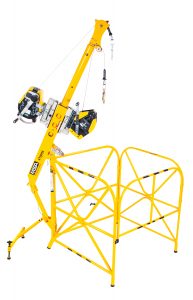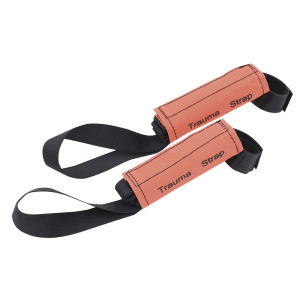
Strapping in for fall protection
April 14, 2021
By
Meagan Gillmore
Harnesses, connectors key components to safely working at height

From left, harnesses by MSA, Pure Safety Group and SureWerx are a critical component of protecting workers at height. (Photos submitted)
Falls continue to be a leading cause of workplace accidents. For workers to be protected, their equipment needs to be easy to use, while also meeting — and at times, exceeding — current safety standards, according to leading subject experts.
A key component of fall protection is having harnesses and connectors — such as self-retracting lifelines (SRLs) or energy-absorbing lanyards — that work well together. Workers must be aware of changing preferences in SRLs and standards for energy-absorbing lanyards.
Leading-edge SRLs have become more popular in recent years, said Tim Accursi, an Ancaster, Ont.-based fall protection specialist for SureWerx.
“The lag in the industry is in training and knowledge about leading-edge SRLs. It’s important for us to get that knowledge out there,” he said.
“As soon as people hear ‘leading edge,’ they think that everything is a leading edge, and that’s not the case. One of our big pushes is training and understanding so individuals know what products are.”
Balancing padding, comfort
While leading-edge SRLs are popular, they can be quite heavy. This can cause discomfort for workers because they’re heavier than lanyards.
This has caused manufacturers to design harnesses that accommodate these SRLs without putting extra weight and burden on workers.
“One of the constant objectives of evolving good harness design is finding that balance between heavy, bulky padding and optimal comfort,” said Judd Perner, brand and product marketing director for Texas-based Pure Safety Group (PSG).
PSG has adapters that allow workers to connect to leading-edge SRLs from the back of their harness, instead of using the dorsal D-ring. This leaves the D-ring available for connecting to an overhead SRL when climbing a ladder, or for rescue applications, said Perner.
Both Series 3 and Series 5 harnesses have adapters to accommodate personal SRLs and leading-edge SRLs.
“It comes down to comfort and how easy it is to connect,” added Alex Tsen, director of fall protection at Laval, Que.-based PIP Canada Ltd.
More padding isn’t always best, he said. Padding can make equipment heavier for workers, resulting in fatigue and discomfort from heat. PIP Canada puts padding on the strategic areas — the shoulders and the back of the legs.
Increasing wearability
Some manufacturers use different designs to increase wearability. Three years ago, MSA launched its V-Series harness line. It uses a racing style design across three models: the V-FLEX, V-FIT and V-FORM+.
“It dons like a vest and connects similar to a cross-style,” said Brandon Griffin, director of Canadian sales at MSA in Kingston, Ont.
The buckle goes across the middle, and the leg connection goes across the thighs in a boxer-type style. Users are able to put it on and adjust it easily, according to the proper instructions, he said.
“They’re able to do that very competently, very confidently. I’ve seen some very good quick fits when people are picking up the harness. It does seem very intuitive for the end user.”
At 3M Canada, STRATA harnesses have a metal spine that transfers weight from a worker’s shoulder to the base of the hips, said John Fuke, technical services manager for Canada, based in Mississauga, Ont.
These harnesses also have a purpose-built connector that is easy-to-use and a polar vest to reduce heat, he said.
Proper knowledge is also key when using shock-absorbing lanyards, said Accursi. In the past, these lanyards had an E4 and E6 classification. However, that CSA standard has been removed.
“Now we can make and market any capacity rating we want on a shock-absorbing lanyard, as long as it meets the testing requirements,” he said.
Each manufacturer’s energy-absorbing lanyards will be different.
Customers need to “read the labels and make sure they’ve got the proper range for what they’re required to do,” according to Accursi.
Some lanyards are created to fit a range of workers.
PIP Canada Ltd. sells the Dyna-ONE, an energy-absorbing lanyard that can be used for workers who are between 100 and 350 pounds. The idea, said Tsen, was to create “one class that fits them all.”
When adding the weight of equipment, most workers will come in between 100 and 350 pounds, he said.
Manufacturers are also making it easier for users to maintain their equipment; proper, daily inspection is crucial.
SureWerx’s PeakProPlus harness has webbing that turns red to show when it needs to be repaired.
“It’s a higher-end model of ours, but it’s a great tool to aid in the inspection,” said Accursi.
Many manufacturers also offer radio-frequency identification (RFID) tags that can be added to equipment. These ID tags can indicate who the equipment belongs to, and can also be used to track when equipment has been inspected.
Rescue retrieval, confined entry

MSA offers the XTIRPA line of products for confined entry. (MSA)
Another crucial part of fall protection is ensuring there’s a way to rescue workers.
In 2020, PSG released the 3-Way Rescue & Retrieval SRL. It can be used as part of an overhead application or connected to a tripod to help retrieve workers or lower them into confined spaces. It connects to one leg of the tripod and to the worker’s dorsal D-ring.
If a worker falls, “the lifeline will lock up and act like a normal SRL,” said Perner. The device can switch into a rescue-retrieval mode and the worker can be brought up or lowered to safety through a hand winch.
“Customers like that capability because it helps them develop a rescue plan that they can write into their operating procedures so they know what to do if they have a worker in a confined space,” according to Perner.
MSA offers the XTIRPA line of products for confined entry. Instead of using a tripod, these products are modular. It includes gating that attaches to the anchor and goes around the point of entry, which allows it to be used in more situations, said Griffin.
This design “allows the user to adapt to the varying confined spaces and ways of entry,” he said.
Trauma straps save lives

Trauma straps are becoming a more common accessory with harnesses. (SureWerx)
Trauma straps are also becoming a more common accessory with harnesses, and some manufacturers are including them in certain designs. When a worker falls, their harness straps can cut off the circulation in their legs.
If workers aren’t rescued in the first 15 minutes after they fall, they could have a heart attack while waiting to be rescued, said Tsen.
Trauma straps give them more time. The straps have loops that workers can step into and support them to stand up. This keeps the circulation flowing in their legs.
PIP Canada Ltd. includes trauma straps with their harnesses.
“It’s a matter of life and death,” said Tsen. “Every harness should have them, in my opinion.”
“It’s a low-cost item that could save their lives,” added Accursi.
The straps are not mandated by safety standards, he said, and SureWerx includes them on a high-end harness model and also sells them as accessories that can be added to other harnesses. Trauma straps are also available in all of 3M’s DBI-SALA brand harnesses.
Finally, no matter what products are purchased, workers still need to properly and daily inspect their equipment. They also need to have a plan for how they will rescue someone if a fall happens on the worksite.
“You need to write a rescue plan around the rescue product, so you ensure that the worker is rescued in a timely manner,” said Tsen, noting it’s the only way to ensure the equipment works properly.
Meagan Gillmore is a freelance writer in Toronto.